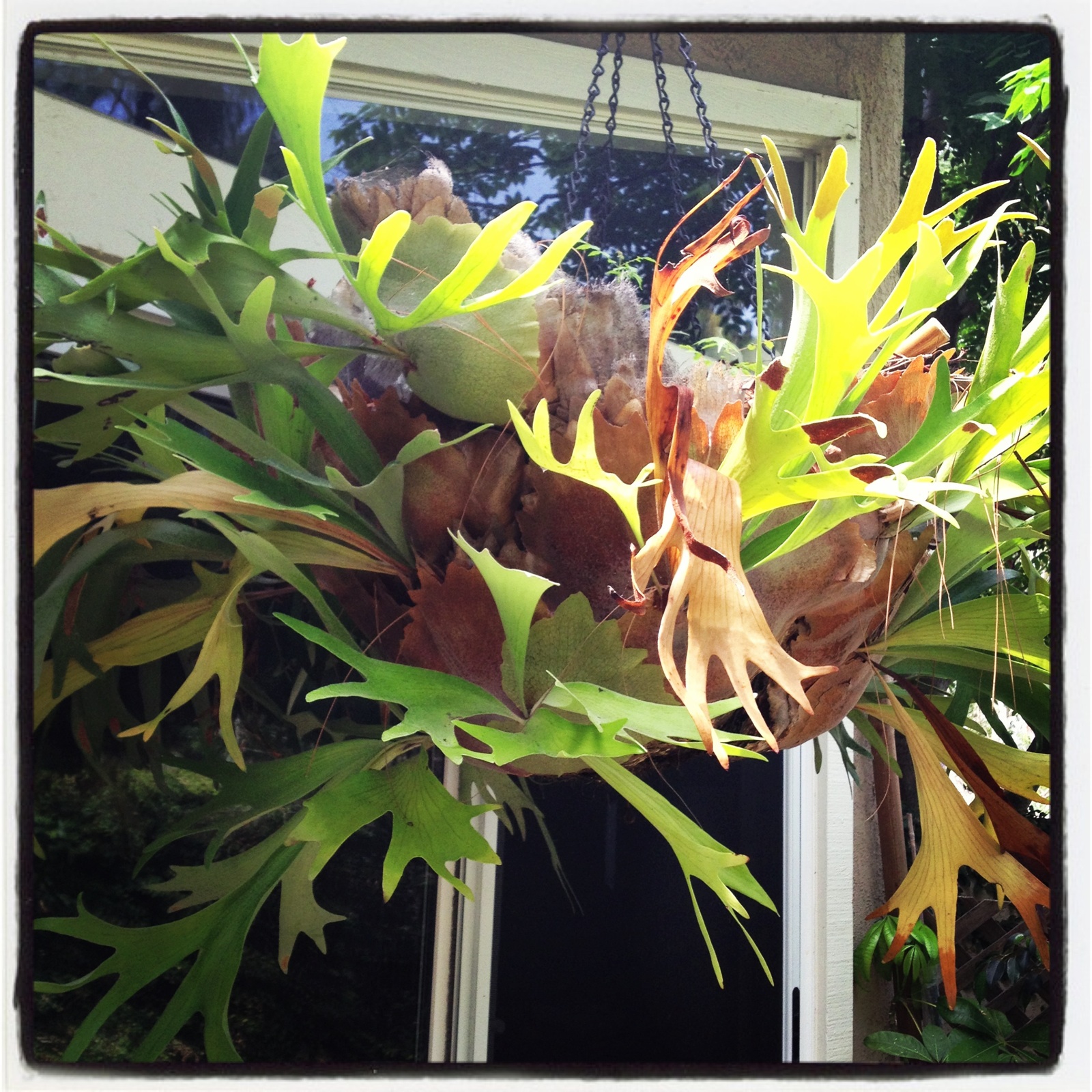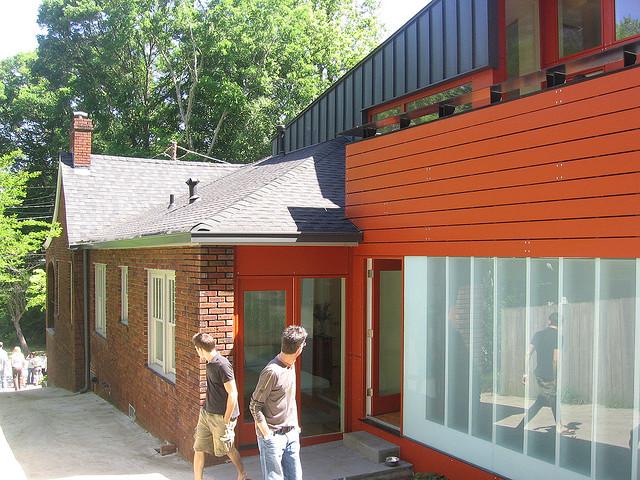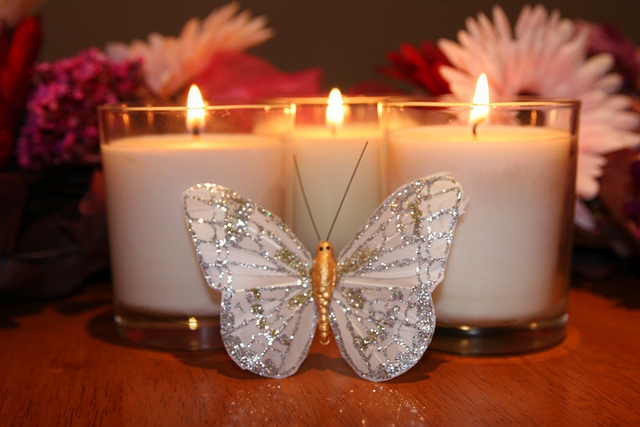
Instagram of the Week :: Meet “Earl” the Staghorn Fern
My Love Affair with Staghorn Ferns:
The first Staghorn Fern I came across was years ago at a good friends housewarming party. Her family had recently purchased a home that had the most amazing plant hanging from the side of their gazebo. I was instantly smitten and set about finding out more about this exotic plant. I found out it was a Staghorn Fern and thus started my love affair with this tropical plant. Fast forward a few years and my husband and I were moving into our first house and when I came across the largest Staghorn Fern I had ever seen (2 x 2 feet) at an estate sale that I just had to get and used the excuse for paying a pretty penny – that it was a “housewarming present” for our new place. We named him “Earl” as he just seemed like an Earl to us and he is still hanging in our backyard. He (yes, I call him a he) is one of the first things you see when you look out our sliding doors into the backyard. We estimate Earl is about 40 years old. I was told when I purchased him at the estate sale that the woman had him for over 30 years and we have had him for about 10. We do our best to take good care of Earl, but one of the nice things about Staghorn Ferns is they are pretty resilient and if we forget to water or feed him (he likes mushy and watery banana’s) he is usually fine.
We have watched him grow more each year and I have taken him in twice now to our local nursery in 10 years to get fresh moss and a new chain since he got too heavy for his last chain. I consider that pretty low maintenance which is a good thing! You might just have your own love affair with this amazing plant! Here is some more information about this exotic plant.
Platycerium:
Platycerium is a genus of about 18 fern species in the polypod family, Polypodiaceae. Ferns in this genus are widely known as staghorn or elkhorn ferns due to their uniquely shaped fronds. This genus is epiphytic and is native to tropical and temperate areas of South America, Africa, Southeast Asia, Australia and New Guinea. The species Platycerium bifurcatum and Platycerium superbum are commonly cultivated as ornamental plants. These oddly shaped ferns grow on trees and rocks and can be found in gardens, especially tropical gardens. (Source: Wikipedia.com).
Martha Stewart provides a good explaination of how to grow Staghorn Ferns:
Growing Staghorn Ferns
Staghorn ferns are epiphytes, which means they are air plants. They gladly grow on a wall mount, which lets air circulate around them. We have a Staghorn by our front door mounted on a wooden board. They need good-quality light, even some direct sunlight. They need some drying of the soil or medium in between watering. The back plates and medium need to be thoroughly soaked. They prefer more moisture when growing in the summer. If grown in cold weather, then less moisture is needed. I find that if I let him dry out between waterings he is happiest. Earl prefers this as his leaves stay a dark green, but if I water too often then they will turn a light brown/yellow.
They get their name because their fronds look like the antlers of a staghorn deer. The plant bears two types of fronds: The sterile fronds are flat, round, and located at the base of the fern, and the fertile fronds are irregular, lobed, and usually ascending from the plant. Spores appear as brownish masses on the tips of the antler-like fertile fronds. These spores will produce new plants when sown on moist, sterile peat moss. However, this is a slow method of reproduction, and most new plants are obtained from suckers (pups), which develop from the mother plants. (Source: Martha Stewart.com).
Staghorn Ferns look great in a Tropical Garden:
One of the things I love most about the Staghorn Fern is how unique it is. You don’t see them often in gardens, but when you do it is such a nice surprise. I have seen them mounted alongside a fence and even mounted to a tree. They add a lot to a garden and you can start out with a smaller version to keep costs down and enjoy it while it grows more each year.
If you are interested in trying your hand at mounting a Staghorn Fern here is a great tutorial at Far Out Flora: https://www.faroutflora.com/2010/02/27/staghorn-saturday/
References:
Wikipedia.com: https://en.wikipedia.org/wiki/Platycerium
Martha Stewart: https://www.marthastewart.com/266466/staghorn-ferns-101
Photo courtesy of: https://thepalmroom.wordpress.com/plant-care-discussion-forum/staghorn-ferns/
Photo courtesy of: Far Out Flora: https://www.faroutflora.com/2010/02/27/staghorn-saturday/
0







One Comment
healthy synonym
Hi there, You’ve done a fantastic job. I’ll definitely digg it and personally recommend to my friends.
I am confident they’ll be benefited from this website.